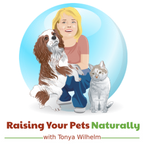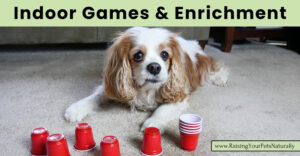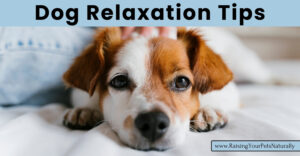Google Adsense—>

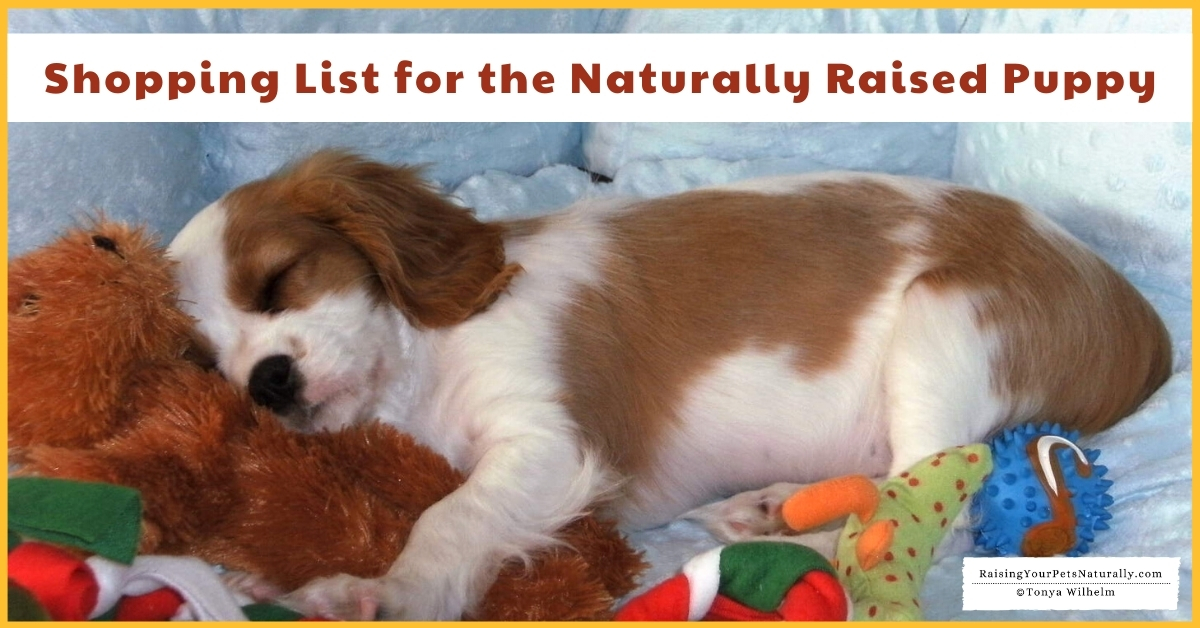
Bringing a New Puppy Home
Puppies! There is no doubt in my mind if you are reading this new puppy shopping list post, you are super excited to welcome a new canine into your life. That makes me happy. I’m also thrilled that you are taking the time before you bring your puppy home to learn about your puppy’s needs.
I’ve been a professional dog trainer for over two decades, and puppies by far are a real treat to work with. They have such a zest for life and tend to be little sponges waiting to soak up the joys of life. Puppies do come with a lot of responsibilities and training along the way.
My blog is full of free articles to help you raise your puppy in a positive and natural way. Please make sure you check out my article index on puppy behavior and training and also my listing on pet nutrition. You might want to hop over to my page all about grooming, too. There’s a lot to go through, so make sure you bookmark the blog and sign up for my newsletter. Now, on to our new puppy shopping list.
Puppy Essentials Supply Checklist
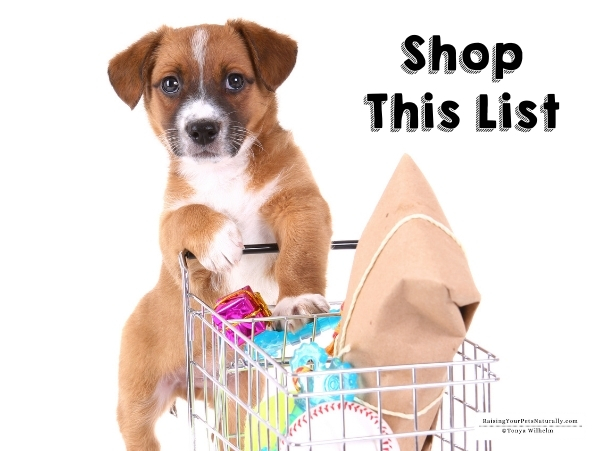
It’s hard to think about where to start, so let’s just dig in.
Online Puppy Class Coming Soon! Sign up for details.
-
-
- Puppy Leashes, Collar, and Harness– You will likely want to have a collar with your puppy’s identification and tags. Your puppy might want to chew his tags as they dangle around his neck. There are dog tag silencers to attach to the charms, or you can even use an ID that is grommeted or slide on your puppy’s collar. Please do not leave your puppy unattended with his collar. It’s not uncommon for puppies to wedge their bottom jaw in such a way that the collar is around their jaw and neck. Their collar also can get caught on something and cause your puppy to panic and injure himself. Speaking of injury, I never recommend walking your puppy or adult dog on a collar. The tension from the leash to the collar can cause injury to your dog’s neck, spine, eyes, and even can cause whiplash. Instead, walk your puppy on a properly fitted dog harness. My go-to suggestion is the Freedom No-Pull Dog Harness. It offers a good fit for most dogs and also can assist in loose leash walking. You can learn more about this harness in my review. As far as a good puppy leash for walking, I tend to gravitate toward a 6′ leash that has a safety latch. I do not like the typical leash hooks that just pull down, I have seen my fair share of dogs wiggling around and their collar ring hits the hook just right and it releases. Instead, I look for a leash that has a trigger snap that folds into itself. For running around fun and freedom, I use a 30-50 long leash. This allows my dog to run around, yet stay secured. Don’t forget the poop bags!
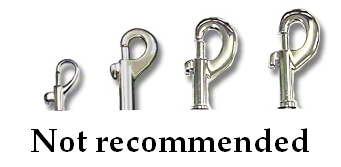
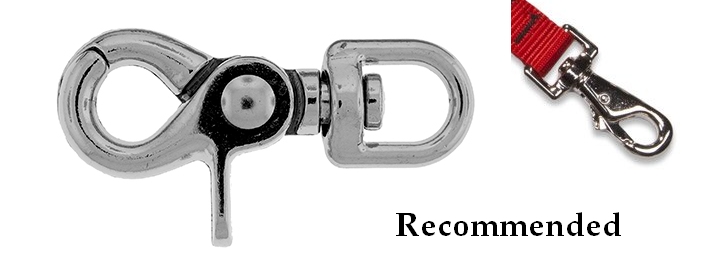
- Puppy Dental Care– It’s best to start a good dog dental care program when your puppy is young. Your puppy will lose his puppy teeth, but the act of teaching him to enjoy having his teeth cleaned is important. Once your puppy loses his baby teeth, generally around four-to-six months of age, you will need to brush his teeth. Daily is ideal. I would recommend looking for a natural dog dental product. It’s incredibly important to flip over any product with a label and read and research each and every ingredient. Grooming products are notorious for being packed full of unsafe things. A few of my favorite dog dental products include organic coconut oil, 4-Legger dental powder, Sweet Breath, ProDen PlaqueOff powder, and New Zealand deer velvet drops. I’m also a firm believer in rotating between products every few days. My favorite brush is actually a finger toothbrush glove. Allowing your puppy to chew raw meaty bones and bully sticks also helps with dental care. Learn how to teach your dog to enjoy having his teeth brushed in this video.
- Puppy Leashes, Collar, and Harness– You will likely want to have a collar with your puppy’s identification and tags. Your puppy might want to chew his tags as they dangle around his neck. There are dog tag silencers to attach to the charms, or you can even use an ID that is grommeted or slide on your puppy’s collar. Please do not leave your puppy unattended with his collar. It’s not uncommon for puppies to wedge their bottom jaw in such a way that the collar is around their jaw and neck. Their collar also can get caught on something and cause your puppy to panic and injure himself. Speaking of injury, I never recommend walking your puppy or adult dog on a collar. The tension from the leash to the collar can cause injury to your dog’s neck, spine, eyes, and even can cause whiplash. Instead, walk your puppy on a properly fitted dog harness. My go-to suggestion is the Freedom No-Pull Dog Harness. It offers a good fit for most dogs and also can assist in loose leash walking. You can learn more about this harness in my review. As far as a good puppy leash for walking, I tend to gravitate toward a 6′ leash that has a safety latch. I do not like the typical leash hooks that just pull down, I have seen my fair share of dogs wiggling around and their collar ring hits the hook just right and it releases. Instead, I look for a leash that has a trigger snap that folds into itself. For running around fun and freedom, I use a 30-50 long leash. This allows my dog to run around, yet stay secured. Don’t forget the poop bags!
-
-
-
- Safe Puppy Chew Bones– Your new puppy will likely think he is a shark. Just like sharks, puppies investigate their new world through their mouths. Knowing this and being prepared will give you a jump start on teaching your puppy what to chew on. Your puppy’s size and chewing style will determine the safest bones and chew toys for your puppy. As I mentioned earlier, if a product has an ingredient label, read that first. I am not a fan of chew treats that are made with ingredients such as wheat flour, wheat gluten, glycerin, gelatin, potato starch, cellulose, rice, by-products, BHA, BHT, sodium benzoate, potassium sorbate, or artificial coloring. That’s just a short list of my no-no ingredients. I also don’t recommend plastic bones. I’d rather my dog not eat plastic. Instead, I look things like raw meaty bones, bully sticks, duck feet, rabbit ears, filled treat toys, and dehydrated fish skins. I always recommend supervising your puppy when he chews and even suggest holding the chew until you know how your puppy is going to handle the item. When a chew is too small, toss it away. It’s cheaper to throw away bits of a dog chew rather than taking your puppy to the emergency veterinarian. Learn more about safe dog chews in this article and how to fill a hollow food toy here.
- Puppy Toys– Choosing the best puppy toys for your new pup can be challenging. Those sharp puppy teeth can act as a saw if he sets out to kill his toy. Once again, supervision is key. If you have soft puppy toys around, and your puppy decides he wants to pull out all the stuffing, try redirecting your puppy to one of his safe chew bones. Try to help him learn that when he has a desire to chew, he can chew his bones vs. his soft dog toys. When choosing puppy toys, do look for durability. Double-stitched toys, thick fabrics, not too many things dangling on the toy, and cut off the tags. For soft puppy toys, I tend to go with goDog and Fluff and Tuff brands. Both are pretty durable. For more rubber-like dog toys I like West Paw Design, Planet Dog, Kong, and PetSafe. I don’t recommend the treats that Kong and PetSafe sell, just the toys. Variety and even rotating your puppy’s toys will help build his interest in choosing his toys over chewing the coffee table. For more information on puppy chewing and mouthing, you can read this article.
Dog Toy Box-Now that your puppy has lots of great puppy toys and puppy bones, you’ll need a centrally located place to keep them. You may want to have two puppy toy boxes, depending on how larger your home is and what parts of your home your puppy frequents. The key is to ensure your puppy can grab one of his toys within seconds when he has the desire to play. I will admit, Dexter wanted to chew his puppy basket when he was young. I’m not a fan of sprays as they don’t usually work and tend to have awful ingredients. Instead, I kept his toys on the floor where his toy box would eventually be.
- Puppy Nail Trims-A puppy’s toenails will grow quickly and need regular trimming. If you are able and comfortable teaching your puppy to enjoy having his nails trimmed with a Dremel, it’s a great way to keep them filed short. If not, I would choose nail clippers that close like scissors, not the guillotine type. Learn how to teach your puppy to enjoy nail trims in this video.
-
You can learn how to use a Dremel for a dog’s nails in this video.
- Puppy Grooming Supplies-Besides brushing your puppy’s teeth and trimming his nails, you will want to brush him daily and bathe him as needed. Your puppy’s fur will guide you in deciding which brush is best for him. I use both a slicker brush and steel grooming comb with Dexter. All-natural dog shampoo is extremely important. After all, your puppy’s skin is his largest organ, and he will also be licking himself. Read that ingredient panel carefully. I use and recommend any product from 4-Legger. They are a top-notch brand and truly know their stuff. Along with bathing a puppy, you might want to invest in a handheld shower, rubber bath mat, a dog drying coat, hair dryer, and microfiber pet towels. If you are going to trim your puppy, check out this article. Learn more about giving your puppy a bath here.
- Puppy Food-I’m a firm believer in providing your puppy or dog a fresh pet diet. Whether that is preparing a BALANCED raw or home-cooked food or purchasing an already manufactured raw puppy food. If you are unsure about how to balance a puppy food, don’t do it. Instead, purchase a prepared puppy food while you learn how to balance an adult dog diet. Then, you can transition him at a later date. When people ask me what the best puppy food brand is, I really can’t say. It all boils down to your comfort level, your budget, and what is available in your area. Personally, I DIY Dexter’s food. If I’m doing a raw pet food review, my criteria is that the meats all need to either be antibiotic and hormone-free or organic. The fruits and vegetables are ideally organic. And I prefer whole foods vs. synthetic vitamins. I look at the ratio of meat to vegetables and fruits. My goal is 75%+ meat and the remaining fruits and vegetables. I don’t use foods with grains, legumes, or potatoes. A few to consider are Primal, Answers, Darwins, Raw Bistro, and Vital Essentials. The links I provided are to their dehydrated foods vs their fresh raw. You will be able to purchase fresh, raw puppy food from your local natural dog store. Your dog should also have access to fresh, filtered water at all times.
- Puppy Bowls and Feeding Station– You are going to want to have a dedicated place to feed your puppy. Dexter’s feeding station is right outside our kitchen in our dining room. This allows me easy access to refill his water and clean his bowls after every meal. I try my best not to use plastic products with Dexter. There was a study performed around the safety of plastic. “Scientists discovered that many unstressed and stressed, PC-replacement products made from acrylic, polystyrene, polyether sulfone, and Tritan™ resins leached chemicals with EA (estrogenic activity), including products made for use by babies.” Even products labeled as BPA-Free can leach these chemicals. Facial allergies can also be connected with plastics. The safest materials on the market for dog bowls are stainless steel and glass. Ceramic dog bowls do have a risk with their glazing process. If a ceramic bowl is chipped, toss it in the garbage because the porous ceramic can hold bacteria. It’s best for dogs to eat their food standing in a neutral position. His head should be neutral, not dropped low or high. Elevated feeding stations work well if you are able to use stainless steel or glass bowls. This usually isn’t the case, so you may need to have a custom feeder designed for your dog or just build a nice little stand on which to place your dog’s bowls.
- Puppy Treats– You are probably going to need to use a lot of tasty treats while training your puppy. Raising a puppy gives you the opportunity to be proactive in his behavior and prevent common behavioral issues from developing. This means lots of rewards. But this doesn’t mean you have to have a fat puppy. When thinking about healthy puppy treats, I think about what daily calories a puppy should be consuming. I will then eliminate some of those calories from his food and use them as healthy puppy training treats. I don’t mean giving your puppy a treat that has no value. Instead use things your puppy needs in his diet, like meat! Meat puppy treats will be motivating and nutritional. You can either cook up fresh meat or dehydrate your own. I do tend to go the easy route and purchase freeze-dried or dehydrated dog treats or even dog food and use them as treats. I really enjoy using Vital Essentials freeze-dried mini nibs. They are technically a food, but it’s cheaper to buy the bag of food vs. their treats. I just toss some in a glass jar for training and place the bag in Dexter’s freezer to help keep it fresh. Yes, Dexter has his own freezer, actually two! Other healthy puppy treat options are Pure Bites, Stella and Chewy, Raw Paws freeze-dried treats, Orijen, Sojos, and Primal.
- Puppy Crates, X-Pens and Baby Gates– I feel teaching a puppy to love his crate is a great training tool. Puppies are so active and can go 100 miles a minute. Sometimes we just need a break and a safe place our puppy can rest while we take our eyes off them. Your puppy’s crate should be large enough for him to stand up, turn around, and lie down with his legs fully extended. You may need to purchase two crates if your puppy is petite and will outgrow his puppy crate. The other option is that some crates provide a panel that you can divide the crate and remove as he grows. As with anything, there are always risks and concerns to consider. I typically recommend the wire crates. This allows for plenty of air-flow, and they are light and collapse easily for travel. The downside, if you don’t teach your puppy to love his crate and he desperately tries to escape, he can bend the wires. That’s not a typical response, but it can happen. If he has anxiety, he’s at a higher risk. The plastic kennels are safer in that aspect but can get really hot. You will want to make sure it’s not in a place with direct sun and isn’t against a wall. You can even point a small fan toward the window portions of the crate. A fabric crate is another option, but if you do have a chewer, it won’t be long before he chews through. I recommend removing collars and harnesses when crating a puppy or dog. An X-pen can come in handy if you want to gate off an area for your puppy to chill out in while you are, say, making dinner. These portable gates are also handy while traveling. Another option is a baby gate. When purchasing a baby gate for your dog, look for one that is tall enough that your puppy won’t be tempted to climb or jump over it. If possible, choose one that has a door you can easily open to walk through yourself.
- Crate Pad– This is a hit or miss in the beginning. The last thing you want to do is leave your puppy unsupervised in his crate and have him eat his bedding. This could lead to an obstruction. Play this card very carefully. I would suggest if you are crating your puppy in your bedroom, start testing him sleeping with a crate pad while you both sleep for the night. This will hopefully allow you to hear him if he starts to chew. If he’s proven to be successful, start to see about adding his crate pad to the crate when you are home with him or for short outings. You can even set up a surveillance camera to watch him.
- Travel Car Seat or Travel Crate– I might not be able to give you a lot of options in this category. It’s important to keep your puppy safe and secure when he’s in the car. Unfortunately, there is a very short list of dog car seats, car harnesses, or car crates that have PASSED a crash test. I want you to be very careful when you are looking at marketing material. I actually had a brand contact me about their car crate that went through crash testing. It did. But it failed! When I researched to find the testing information, it did not pass. But their advertising stated crash tested. So, make sure you look it up. Here are the ones I could find that passed a car crash test. Sleepypod Clickit Sport (Sm., Med., Lg., XL), Sleepypod Clickit Terrain (Sm., Med., Lg., XL), ZuGoPet The Rocketeer Pack, Sleepypod Carriers, Gunner Kennel G1 (Sm., Med.), Gunner Kennel G1 Intermediate, Lucky Duck Kennel Intermediate
Beds and Blankets– One of the best ways to teach your puppy where you want him to hang out in the living room is to give him his own spots. Create an area with his bed in a centrally located spot where the family hangs out. Having his toy box next to it is ideal. You can also have a little mat outside your kitchen area where he can rest while you are in the kitchen. This will help him learn where to be vs. under your feet.
- Puppy Clothing– Depending on the season and where you live, you might want to consider some puppy clothes. A few items that come to mind are winter jackets, cooling jackets, and winter boots.
- Potty Clean Up– If potty accidents happen, you will want a natural and effective pee spray. 4-Legger’s lemongrass shampoo mixed with water in a sprayer is the perfect natural potty cleaner.
- Pet Insurance-100% I think every dog should have pet insurance. You never know what life will bring, and being financially able to care for your dog is so important. Dexter has had pet insurance since he was about one year old. Even though over the past ten years, his insurance premiums have slowly increased to about 3x his original premium, having pet insurance is worth its weight in gold. The key is to find the right plan for your puppy before needing it. You can learn more about choosing an insurance plan for your dog in this article.
- Puppy First Aid Kit– Last, but certainly not least, is your puppy first aid kit. I would recommend starting with a prepared dog first aid kit and adding to it. Likely, I would add natural remedies such as Arnica, slippery elm, Calendula tincture, Digestive Upset, and Safe Journey Flower Essence.
Now that you have your list of essentials for a new puppy, be prepared to have a lot of fun! If you want more help, pick up a copy of my book, Proactive Puppy Care, and sign up for my weekly newsletter. Enjoy the puppy breath.

Your questions or comments are welcome below.
Are you looking for even more ways to stay up to date with Raising Your Pets Naturally? Sign up for the newsletter for more tips and promotions. Don’t forget to be social and Like, Follow and Subscribe. Comments below are always welcome.
